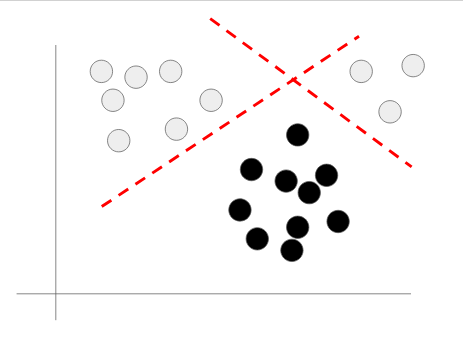In logistic regression The following function produces a linear decision boundary
1) h(x)=sigmoid(w1.x1 + w2.x2 +...+bias) i.e. h(x)=sigmoid(z(x))
Eventhough there is a non linear activation like sigmoid, since the input features are all linear, the decision boundary z(x)=0 is also linear.
2) whereas if
h(x)=sigmoid(w1.x1^2 + w2.x2^2 + w3.x1.x2 + w4.x1 + w5.x2 +...+bias) i.e h(x)=sigmoid(z(x))
now the decision boundary z(x)=0 is nonlinear since the input terms are nonlinear.
Now
In Neural networks, the multiple hidden neurons just output a final linear combination like the first scenario since the input terms were linear (x1,x2) not (x1,x2,x1^2,x2^2,x1,x2). So how can it create a non linear decision boundary?




